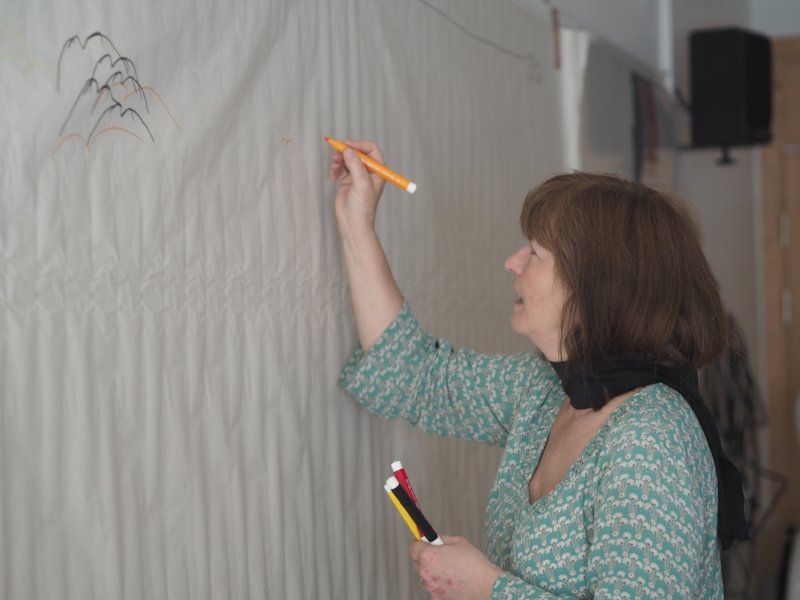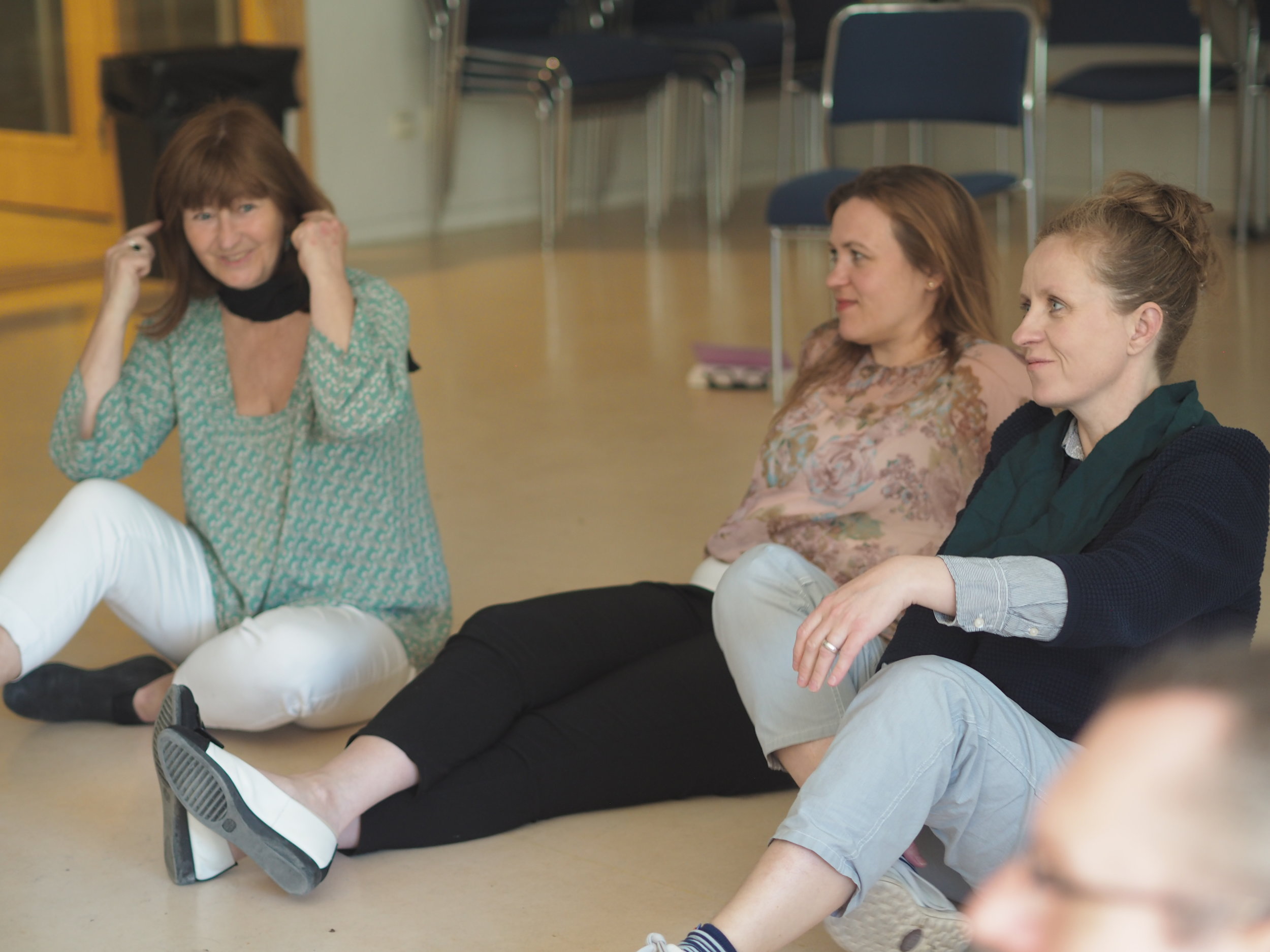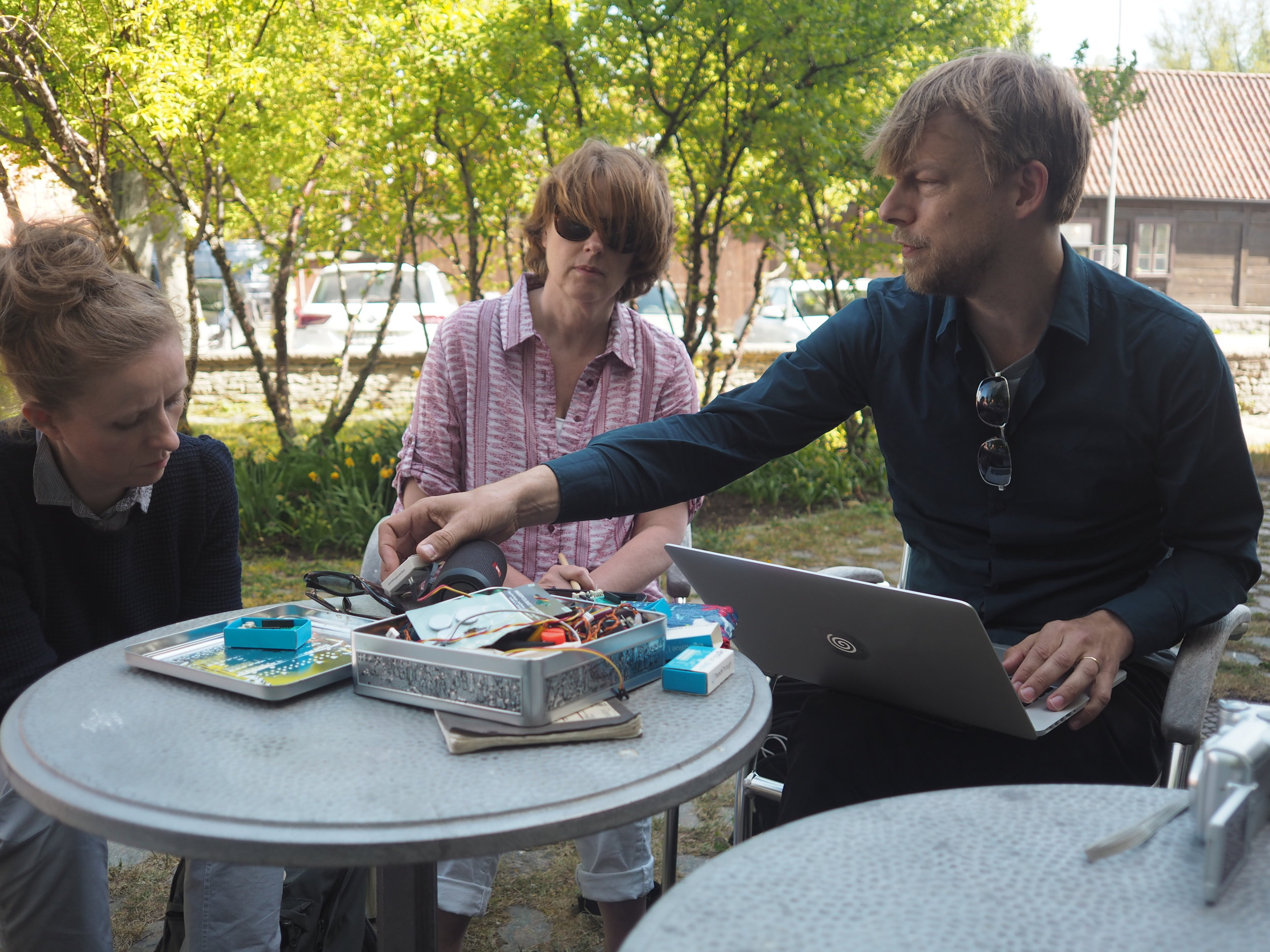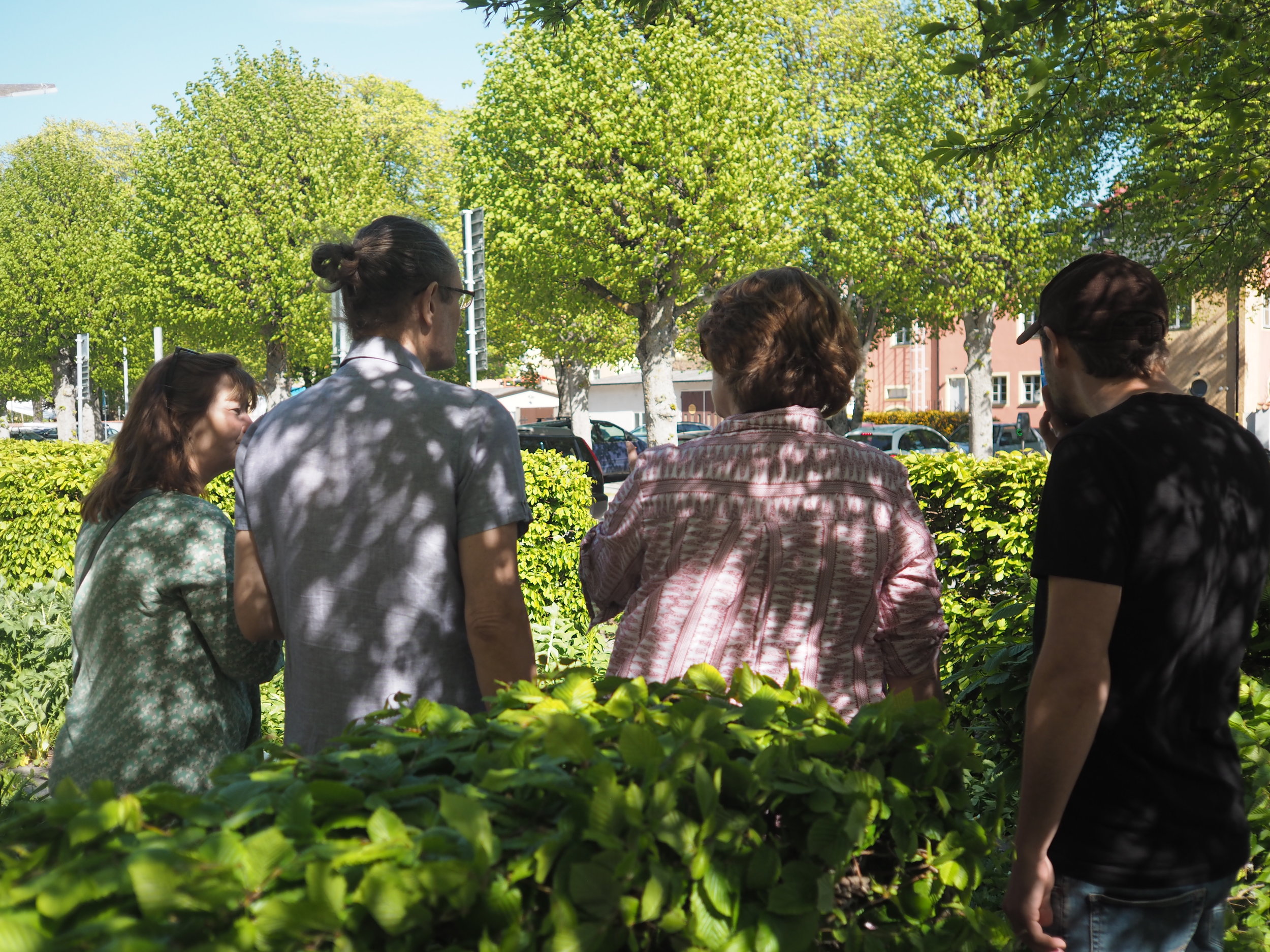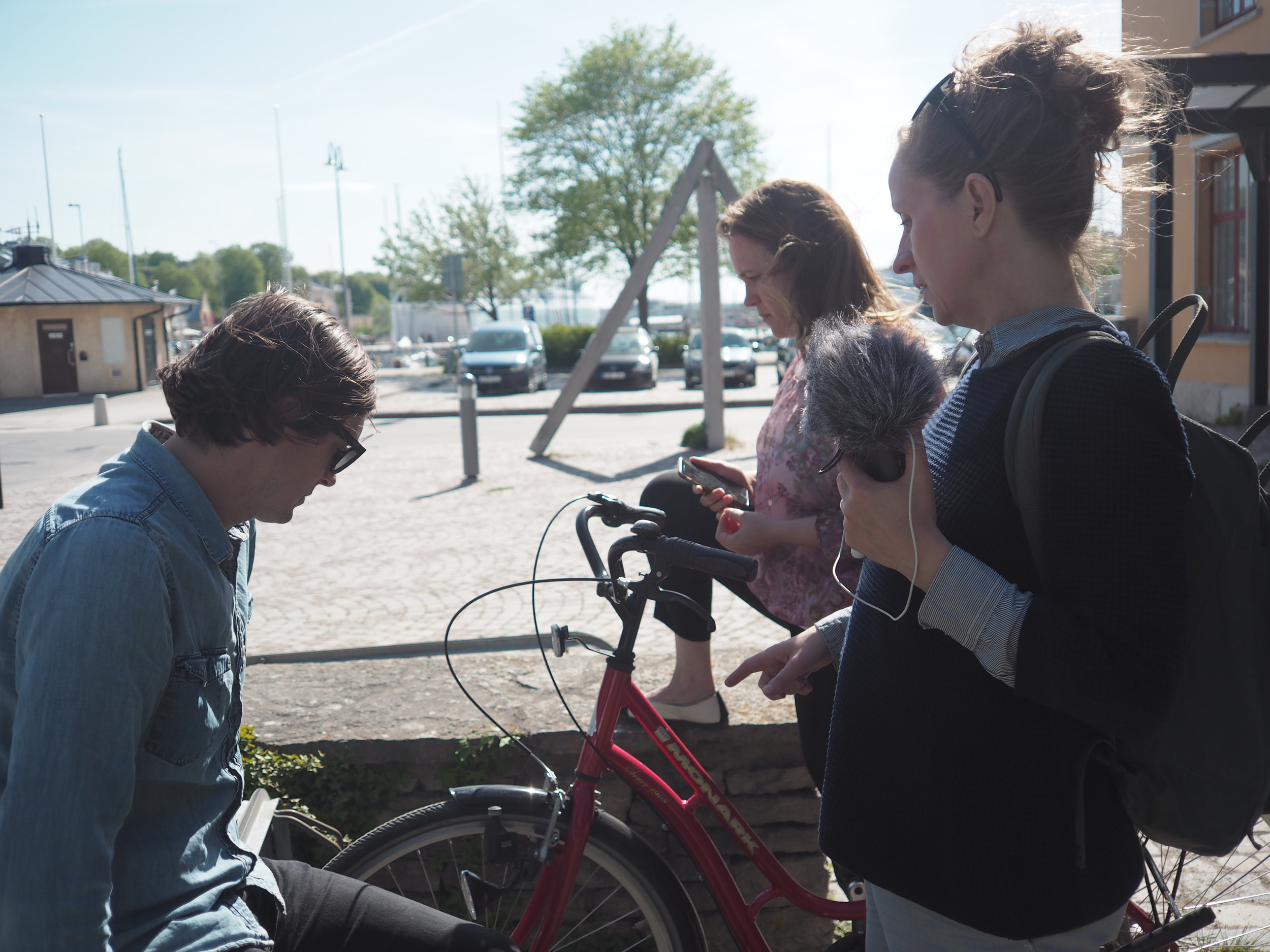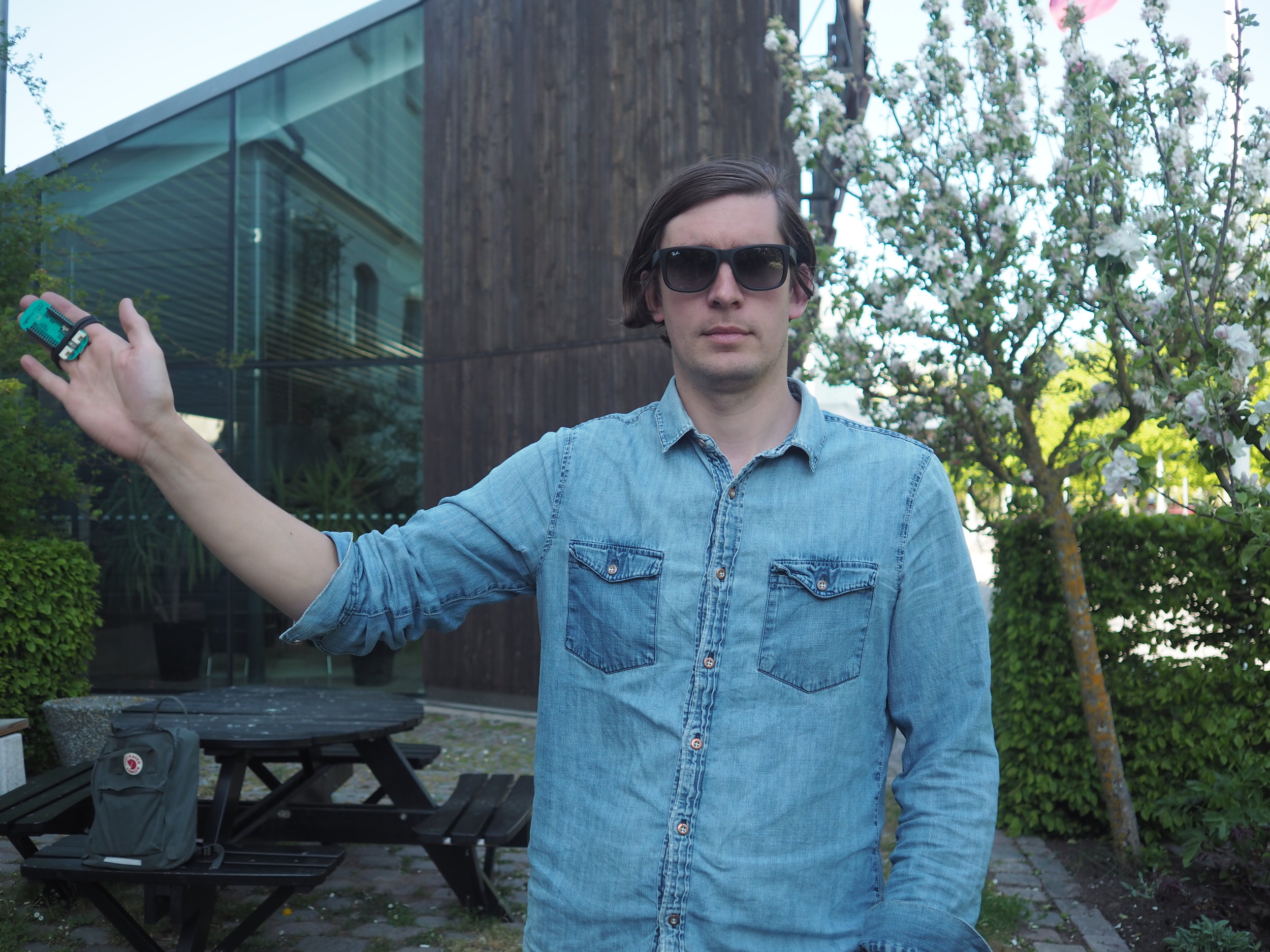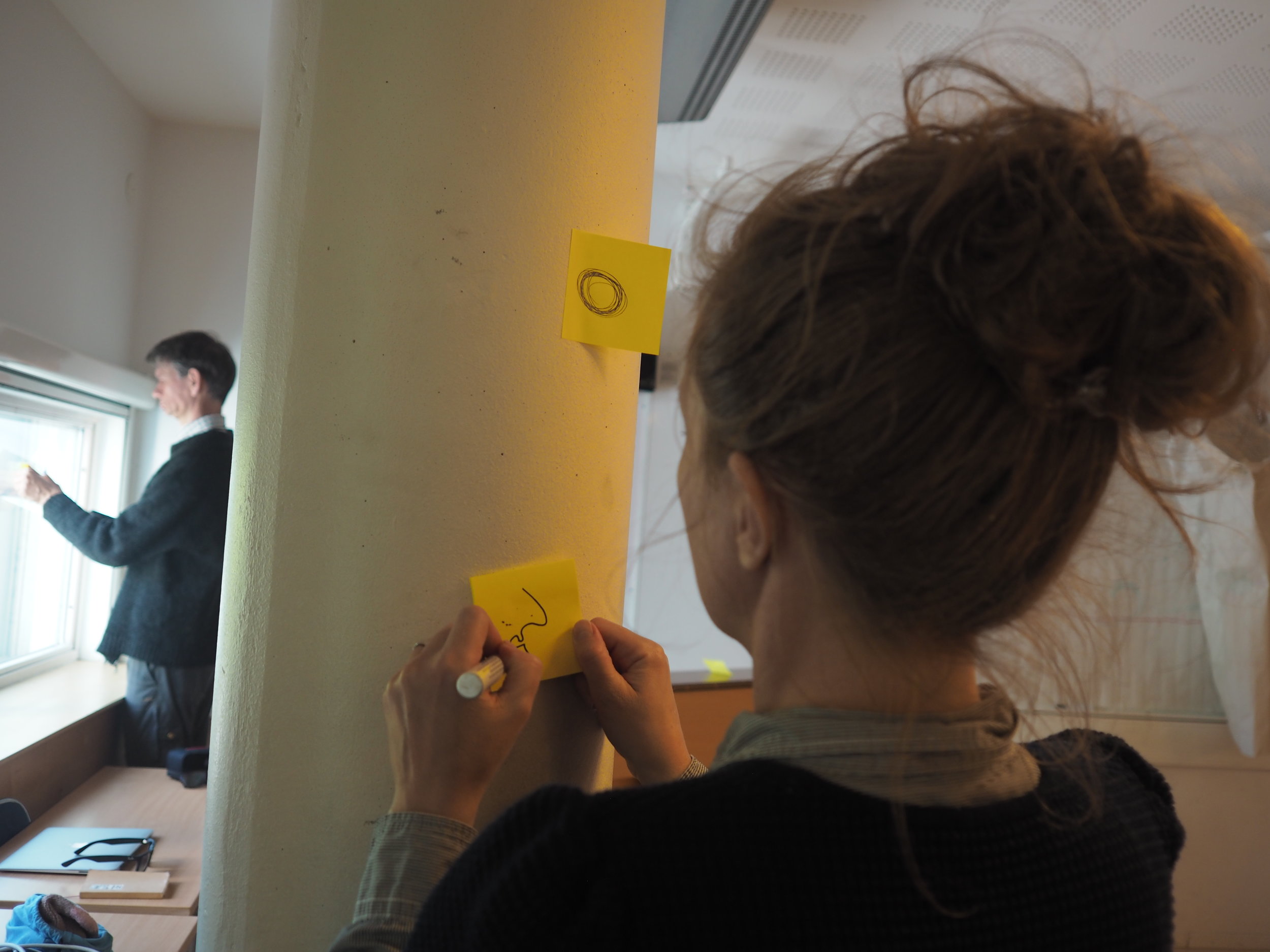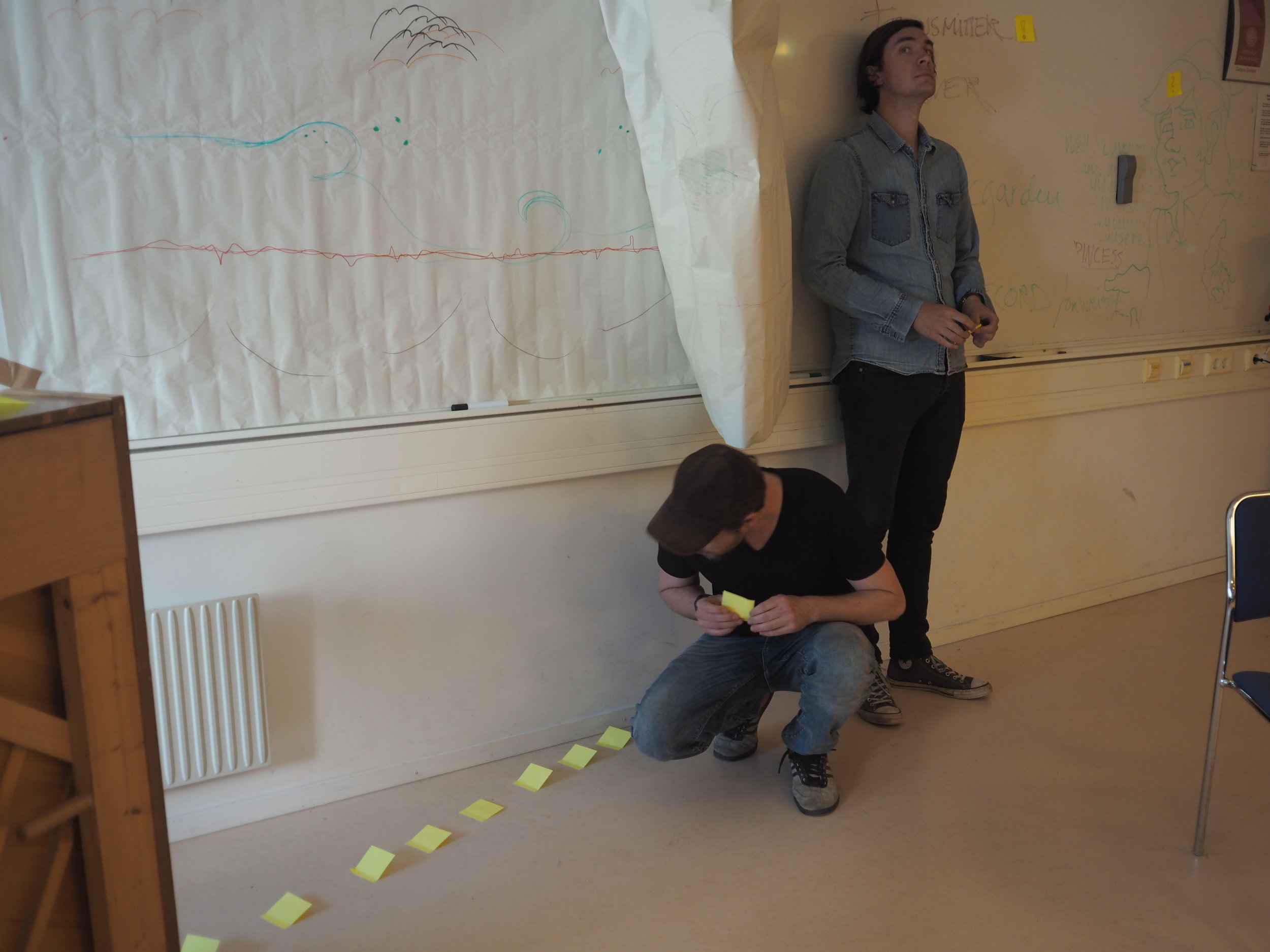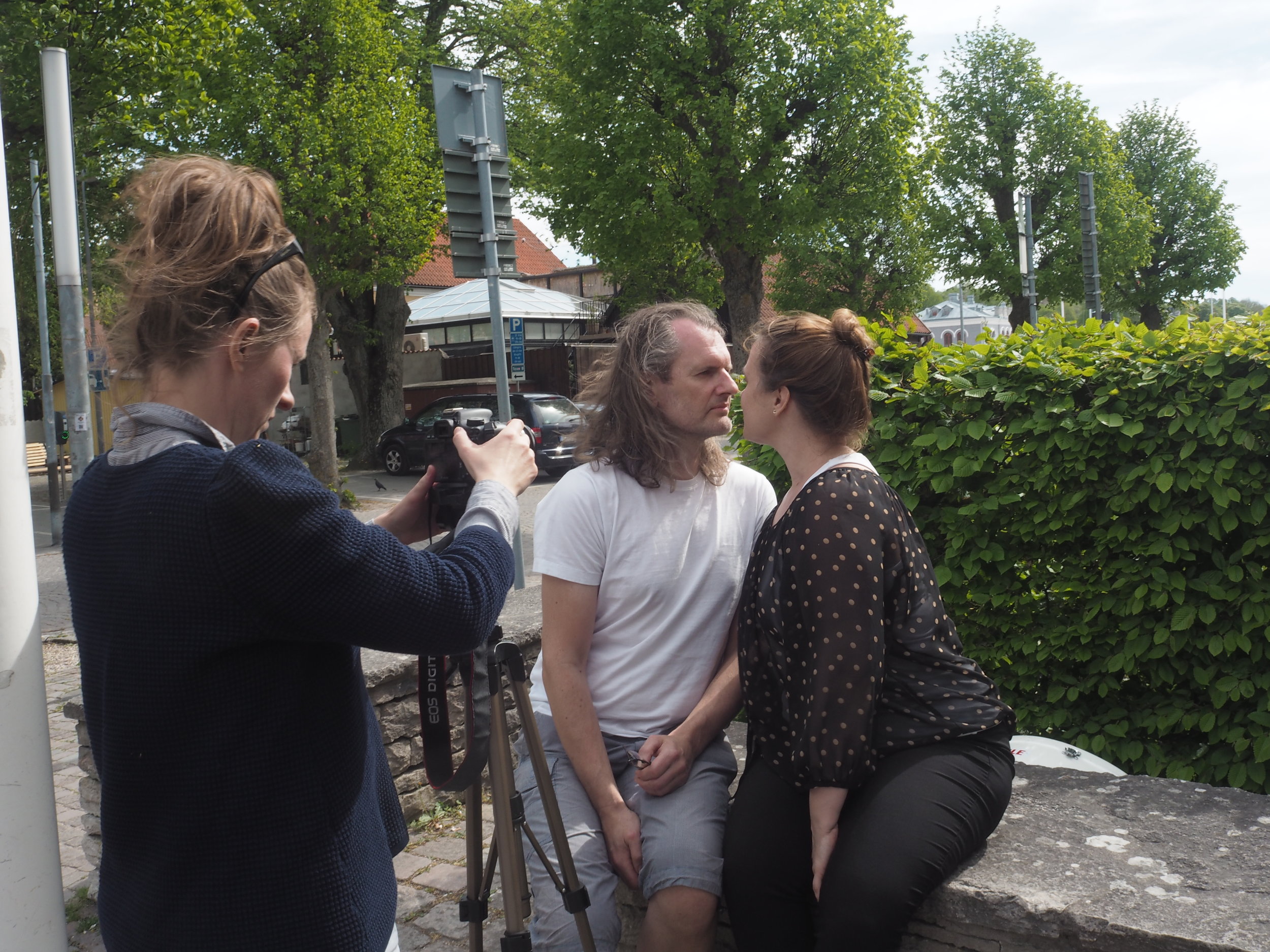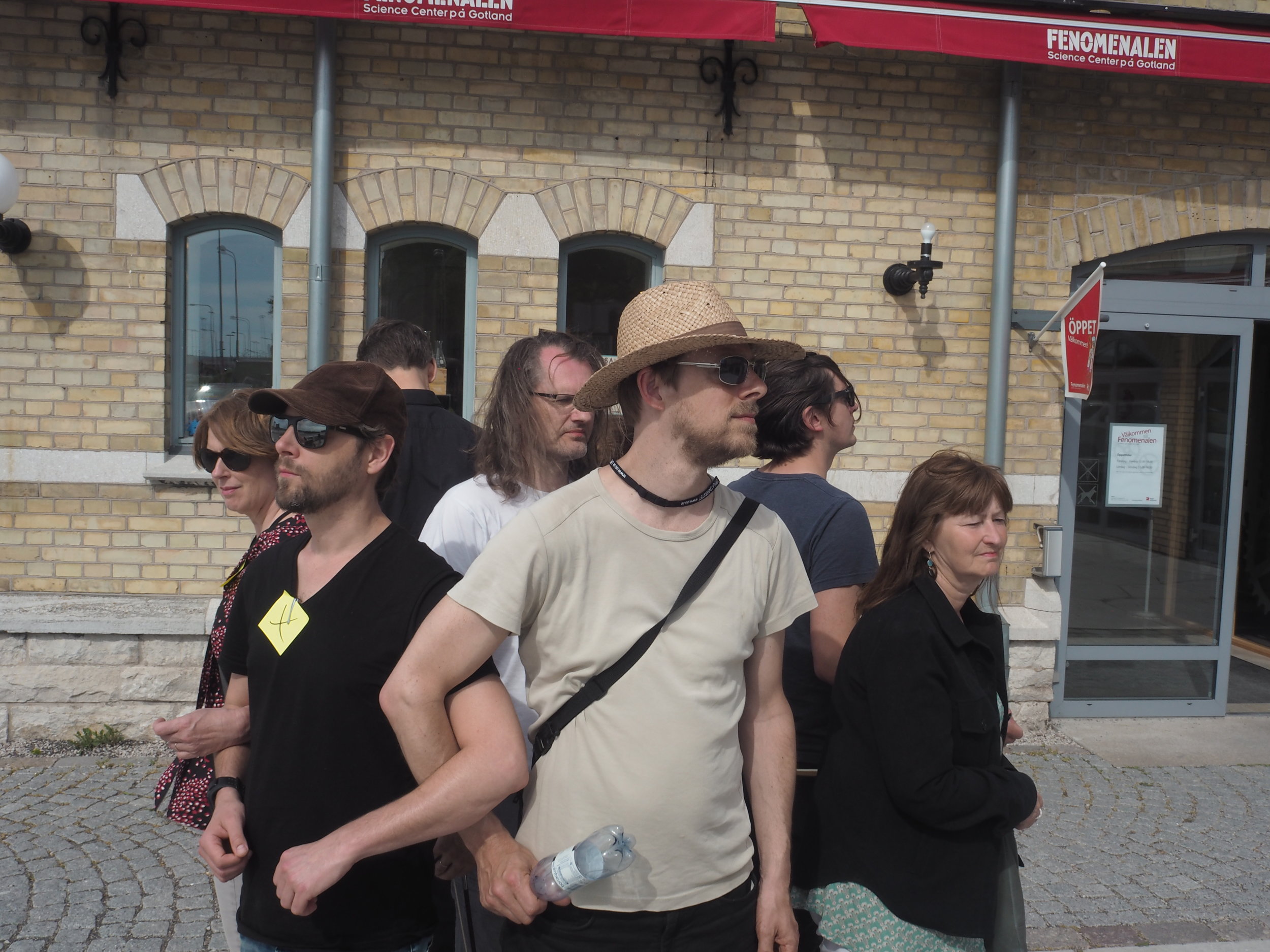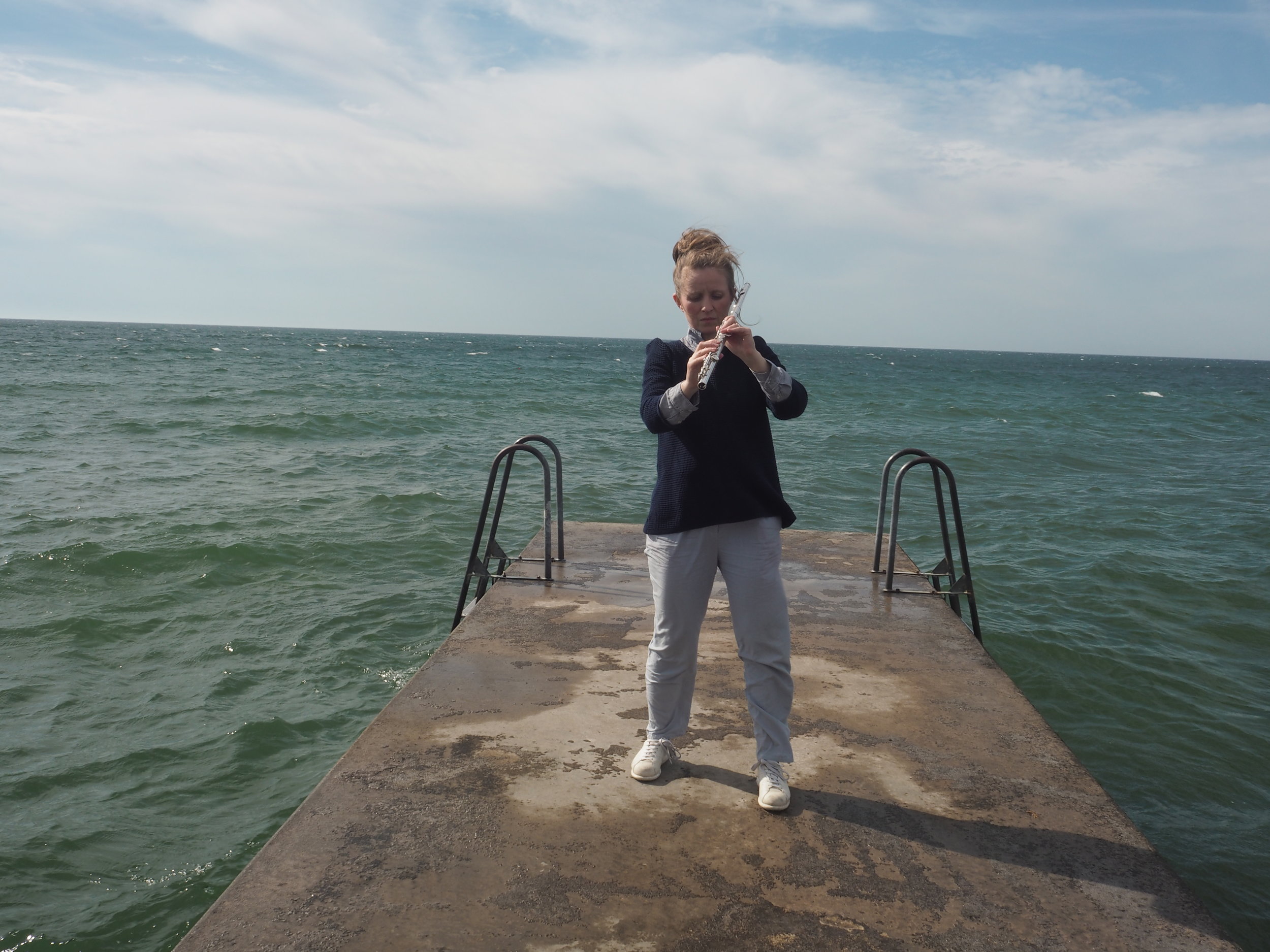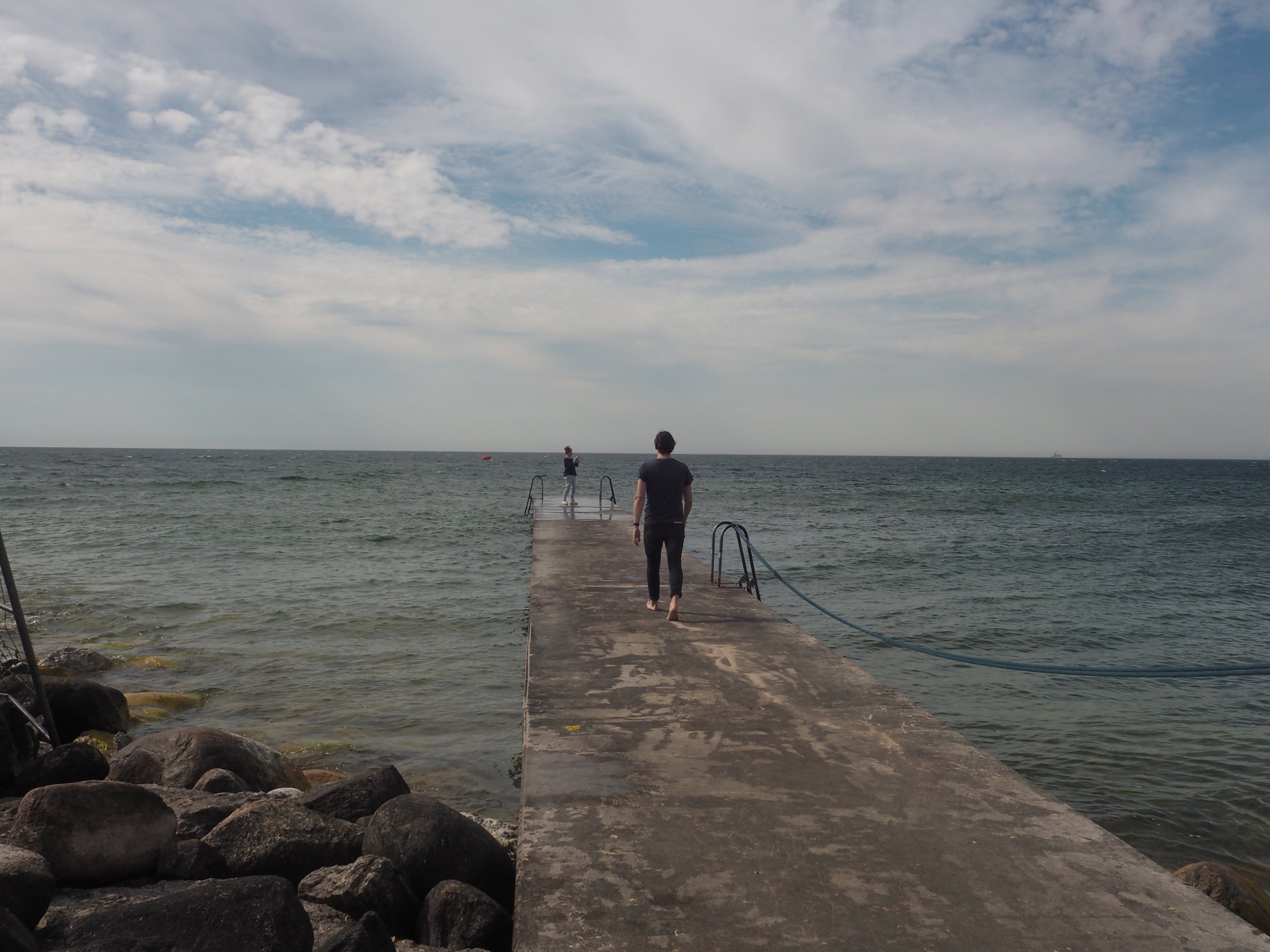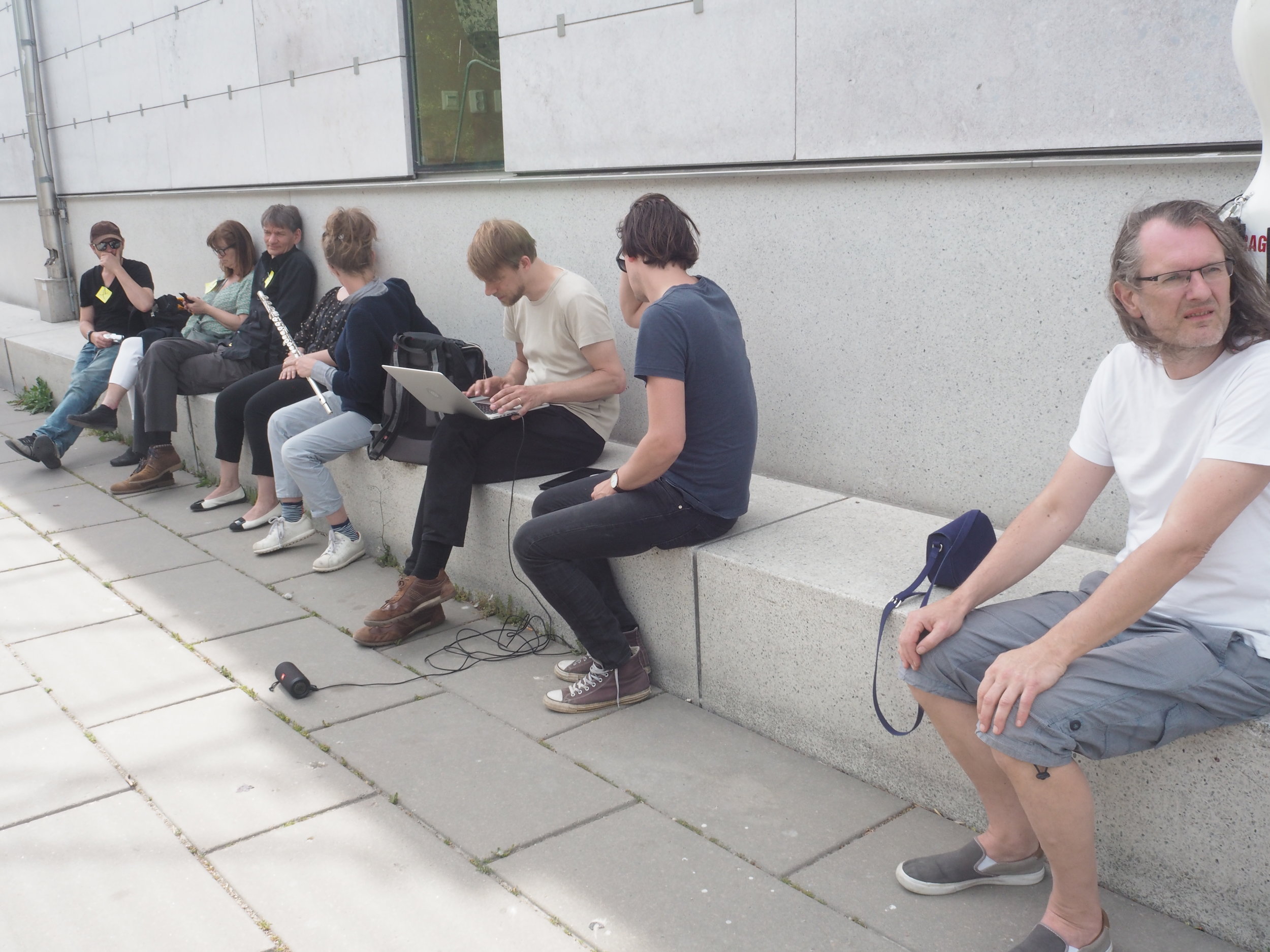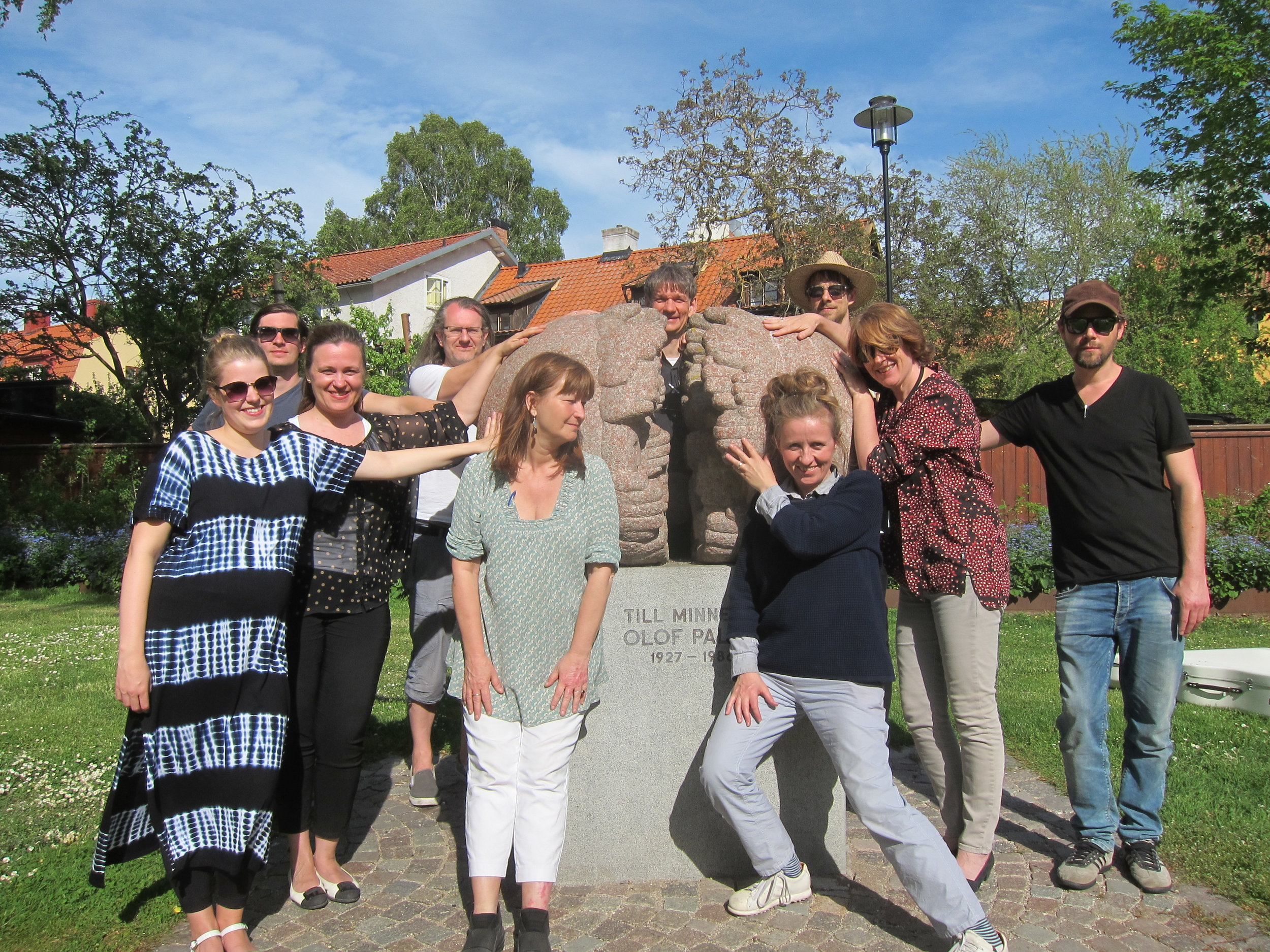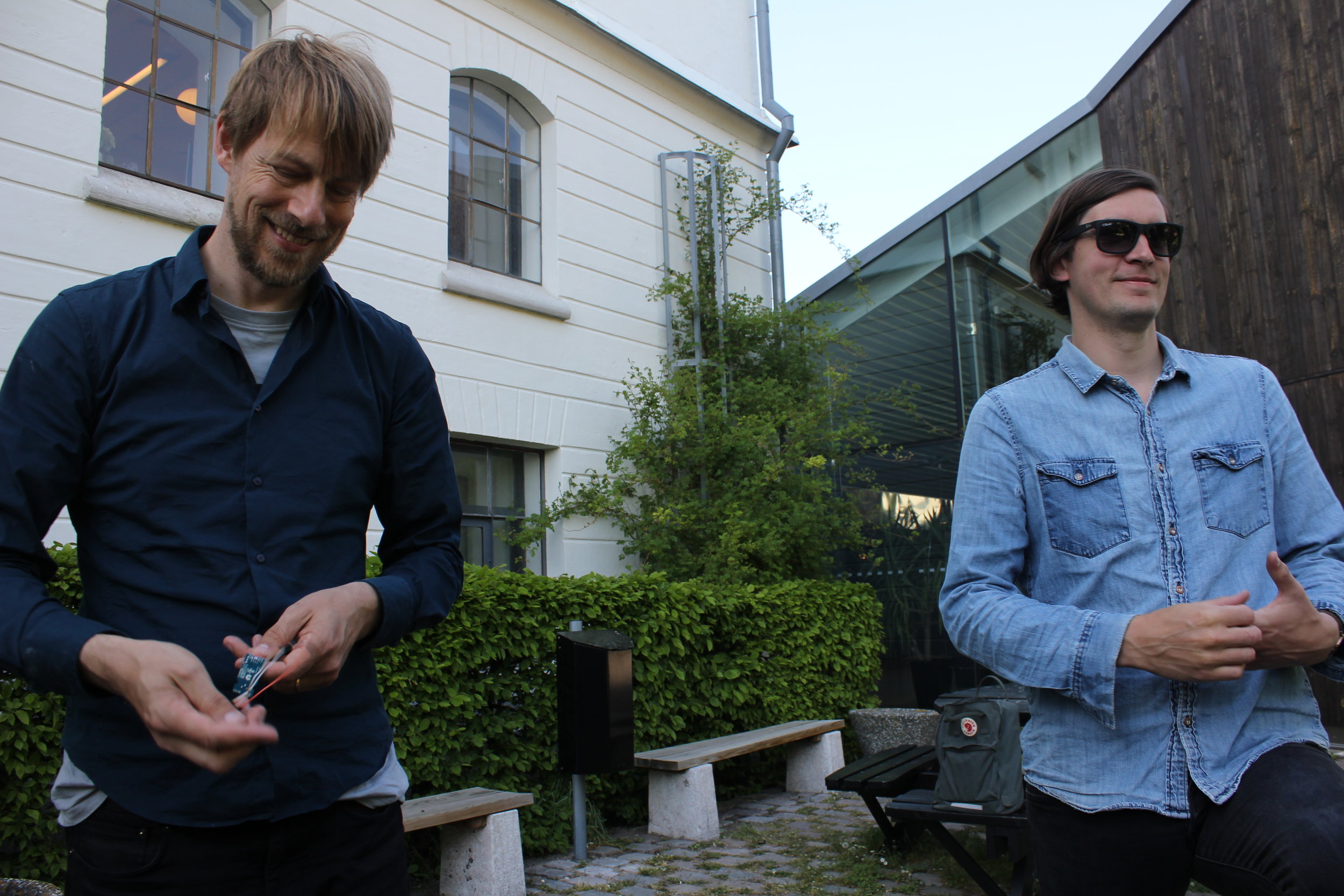Staff Training in Visby
Teachers as Learners
In May 2017 we all flew to Sweden for some days of staff training in Visby, a medieval seaside village at the island Gotland. By staff we mean the members of the working group since we acknowledged that we as teachers needed to live the process of exploration and experimentation ourselves. This way we would be able to dive into core aspects of cross-arts collaboration and develop a mutual understanding and experience of the concept in order to bring our work forward.
The aim was to explore cross-arts making, setting up a cross-arts laboratory, using Visby as the context for our art making. We expected that this process would give us the opportunity to look into approaches, environments, activities, conditions and tools which might be useful to facilitate and stimulate cross-arts collaboration and creative learning processes with students.
The first day we all brought a specific exercise or workshop to share and execute with the group as an example of our practice. These activities served as a gateway to creative collaboration, through listening and activating the perception of being together in a space. The aim was to find common ground as a starting point for the collaboration, avoiding our usual working methods and field-specific skills. Everyone was invited to work with the theme: Language. The theme could relate to various aspects of the notion of language: Communication through art, non-verbal communication, the variety of languages presented through the different art forms.
Reflection:
Coincidentally, all the workshops and exercises we shared focused on observation through opening up our senses. All of us had presented activities emphasising perception through listening, seeing, touching and feeling. We found that in our practice, we all use the senses in a comparable way, aiming to become more aware, e.g. of space, sounds, physical presence of ourselves and others.
The process of becoming more aware of ourselves, the environment and each other, served as a good preparation for collaborative art making. The experiences and observations served as source of inspiration and as approaches to be used during the actual making process.
Reciprocity or giving and receiving formed a recurring element of the workshops. Giving and receiving in the sense of being responsive to what other group members were offering and to comply with it, building on their material without debating whether it was useful or not. Embracing the contribution of every group member as valuable formed a core element of our collaboration. It prevented us from getting into the mode of judging and debating about right or wrong. It opened up the space for experimenting and it created an atmosphere of equality and safety.
Since the workshops concentrated on using our senses there was a natural focus on us using our physicality as an instrument, opening up new possibilities beyond the field of our own discipline. This helped us to get away from our usual habits and field-specific skills and served as an opening into a collaborative space where we had a common language. Now it seemed no longer relevant to focus on the notion of cross-arts or disciplines, as this common language created a point of departure for the actual art making, producing material from scratch.
There seemed to be a lot of common ground within the working group and therefore we experienced working together as relatively easy. Being confronted with the fact that we all have the human need to express ourselves, reminded us that this is the core of all our disciplines. We also realised that a lot of the approaches we used, were coming from experimental theatre, experimental music and experimental art. Even though this way of working has a long standing tradition within these fields of art, it might be a new approach within our institutions, especially when approaching interdisciplinary work with students.
Art Making LAB*
*LAB, abbreviation for laboratory in which participants test, explore and create material. This laboratory is also defined by its non-hierarchical and non-judgmental character.
After we had spent the first day participating in each other’s workshops and exercises, we dove into the process of collaborative art making. We set up our art making LAB by dividing into groups, which spent some hours on the art creation. We went into the village, the parks and harbour of Visby to find places or objects that could serve as a source of inspiration for our art making. All of the groups focused on stimulating audience interaction in whatever form that seemed to be relevant.
Having spent some time exploring the context, finding a common purpose, establishing a dialogue about possible ways to implement our ideas and performing some experiments, we created a piece of art. The approaches we had investigated during the workshops fed directly into this process. We then showed our projects to each other and reflected on our experiences: on the one hand as group members, part of the collaborative process, and on the other hand as audience members, observing the other groups.
These artistic offerings or performances were site specific. They responded in different ways to the environment, inviting the audience to look, listen, observe and interact with them in a natural way. The presentations spanned everything including an experience on a pier in which individual audience members were invited to listen to the wind blowing through a flute, creating new music in its own natural way, and a group procession situated in the park in which audience members became performers of a mutual ritual.
Reflection:
As a subject of our reflections we discussed the cross-arts element of the work we performed during our staff training days. We realised that becoming a community of practice had been a core aspect of our cross-arts collaboration. Through creating a non-judgmental environment in which we could share experiences and exchange knowledge and expertise, experiment and learn from and with each other in a non-hierarchical way we became a ‘Community of Practice’.
The assignment of creating a piece of art together within such a short time-frame was a refreshing challenge. It stimulated an appetite and creative energy within the group, resulting in an attitude of being eager to collaborate and interact within the Visby context, rather than trying to do deliberate cross-art making.
There was an enthusiasm to explore different ways of working, how to use material and what questions to ask to bring the work forward. We needed the space to play in order to investigate our material and search for new possibilities. Playfulness was at the core of our work process. We created an environment that allowed us to be playful and at the same time rely on both our discipline specific knowledge and our intuitions and impulses during the creative process.
We experienced that connecting to artists from other disciplines brought us new impulses and new ideas, allowing us to think beyond our usual box and stretch our comfort zone. The potential gains of these cross-arts collaborations for our identity as artists, is something to explore in future collaboration.
Final reflections
The Gotland meeting was based on the acknowledgement that we as teachers are also learners. We went on a mutual journey of discovery in order to learn more about the practices within different art disciplines. The Gotland meeting gave us the opportunity to explore, experiment and reflect together as a community of learners. Although we don’t have the same frame of reference we found a way of creating a mutual language. It was pivotal for our journey of discovery that we didn’t limit our collaboration down to exchanging learning and teaching approaches to be used in our teaching practice but also to become active artists and make art together. We learned that the act of making art together was a means to create a meaningful dialogue and collaboration. Metaphorically: Making art as a dialogue between artists.
Reading on: First Intensive Programme

